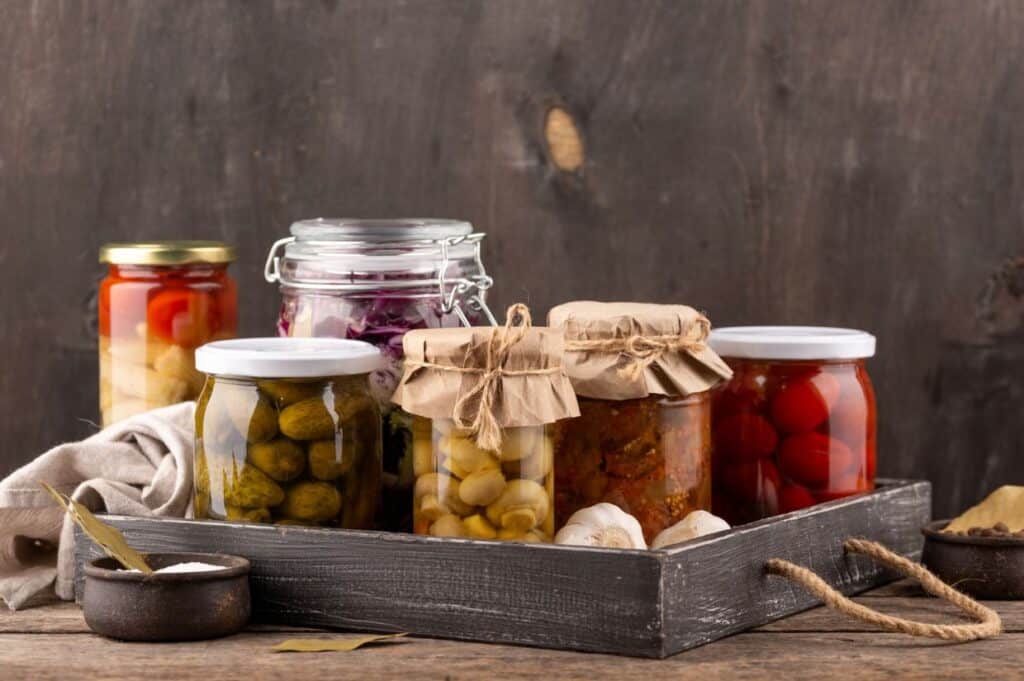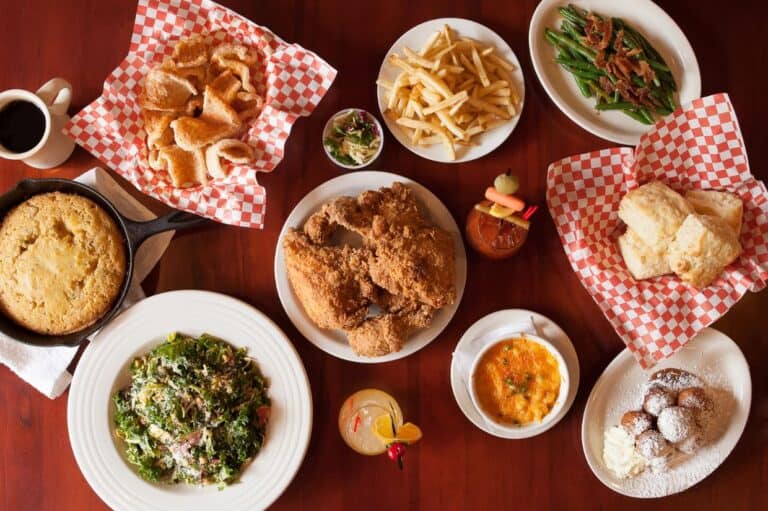When it comes to Southern cuisine, there’s one thing that never goes out of style: Preserving. Whether it’s pickles, chow chow or relishes, Southerners have a long-standing love affair with capturing the peak of fresh produce and saving it for later. But these jars are more than just preserved vegetables — they’re a link to the past, a way to hold on to family recipes and a reminder of a simpler time when every little thing had value. Let’s look at the rich history and the role these humble jarred treasures play in preserving Southern traditions.

The charm of pickling in the South
Pickles are probably the first thing that comes to mind when we think of food preservation, and for good reason. The South has no shortage of options from crispy cucumber pickles to tangy pickled okra. If you grew up in the South, there’s a good chance you’ve spent a summer afternoon shelling beans or slicing cucumbers with family, getting everything ready for a big batch of pickles.
This tradition of pickling comes from a time when it was necessary for survival. Without modern refrigeration, pickling was one of the best ways to store food and make it last. But even though most of us now have well-stocked refrigerators, the pickling tradition continues. Part of it is the unique flavor you just can’t find in store-bought jars, but it’s also about the memories and the connection to the past. Your grandmother’s pickle recipe might have been handed down through generations, and every time you make it, you’re continuing a family legacy.
The flavors also vary across the South. In some places, bread and butter pickles (which are sweet and tangy) reign supreme, while in others, it’s all about that spicy, garlicky dill pickle crunch. Some folks even add a bit of sugar to their dill pickles for a sweet-sour combo. The beauty is that no matter what pickle jar you open, you’re getting a taste of Southern history.
Chow chow: The forgotten hero
If you haven’t heard of chow chow, you’re missing out on one of the South’s best-kept secrets. Chow chow is a type of pickled relish, often made with green tomatoes, cabbage, onions and peppers, and it’s one of those condiments that Southerners can’t get enough of. It’s a little tangy, a little sweet and has a satisfying crunch that makes it the perfect topping for all kinds of dishes.
In some parts of the South, chow chow is used as a topping for hot dogs or burgers, but traditionally, it’s served alongside beans or peas. You haven’t truly lived until you’ve had a big bowl of pinto beans topped with a generous spoonful of chow chow. It brightens the dish, adding acidity and a subtle sweetness that cuts through the richness of the beans.
Chow chow can vary greatly depending on where you are in the South. It’s a bit spicier, with a heavy hand of hot peppers thrown into the mix in some regions. Other places keep it mild and focus more on the tanginess. Some even use a sweeter version of chow chow to complement dishes like pulled pork. Like most Southern preserves, there’s no right way to make chow chow — just your family’s way.
Relishes: A little something extra
Relishes are like the Southern pantry’s secret weapon. They’re sweet, sour, crunchy and pack a punch of flavor in every spoonful. Much like pickles and chow chow, relishes serve as a way to extend the life of fresh produce, especially when you find yourself with an abundance of vegetables from the garden.
Corn relish is one of the most common relishes you’ll find. Made with fresh corn, peppers, onions and sometimes tomatoes, it’s a zesty, colorful condiment that pairs perfectly with grilled meats, barbecue and even fried fish. The best part? Corn relish captures that peak-of-summer flavor long after the season’s over, so you can crack open a jar and be transported back to those warm, sunny days whenever you want.

Cucumber relish is another Southern favorite, often served alongside burgers and hot dogs at cookouts. It’s bright and vinegary with just the right sweetness, making it the perfect companion to salty, smoky grilled meats. But don’t be fooled into thinking relish is only for summer fare. It can add a burst of flavor to all kinds of dishes year round, from deviled eggs to potato salad.
The heart of Southern preservation
At the core of Southern preservation is a deep sense of resourcefulness. Nothing goes to waste, especially when it comes to produce. If there’s a bumper crop of cucumbers or tomatoes, you pickle them. But if you’ve got more corn than you know what to do with, you turn it into a relish. Chow chow becomes a way to use up the odds and ends of your garden that might not have a place elsewhere.
For many Southerners, preserving food is an essential part of preparing for the winter months when fresh vegetables are harder to come by. But even as the need for it has faded with modern conveniences, the tradition remains strong. Pickling and preserving are more than practical — it’s a way to connect with the seasons and honor the work that goes into growing food. Every jar of pickles, chow chow or relish is a testament to the idea that food should be savored and never wasted.

The tradition continues
Today, pickling and preserving are enjoying a bit of a resurgence, even outside of the South. Whether it’s the trend toward farm-to-table dining or the rise of DIY food culture, people are embracing the idea of making things from scratch and storing them for later. But for Southerners, this isn’t just a passing trend — it’s a way of life.
You’ll find grandmothers teaching their grandchildren how to properly can and preserve, passing down family recipes and techniques that have been used for generations. You’ll see roadside stands selling homemade pickles and chow chow, each jar filled with personality and a story behind it. And if you’re lucky, you might get invited to someone’s kitchen to watch the magic happen — jars lined up, hot water boiling and the air thick with the tang of vinegar and spices.
Preserving more than just food
Pickling, making chow chow and preparing relishes in the South is about more than just preserving food. It’s about preserving tradition, family and community. Every jar tells a story — whether it’s of a grandmother who taught her children how to make pickles or a neighbor who shared a batch of chow chow after a good harvest. It’s a reminder that food is more than just sustenance; it’s a way to connect with the people and places that matter most.
So the next time you crack open a jar of homemade pickles or spread some chow chow on your beans, know that you’re participating in a tradition that goes back generations. You’re not just enjoying a tasty condiment — you’re savoring a slice of Southern heritage.





